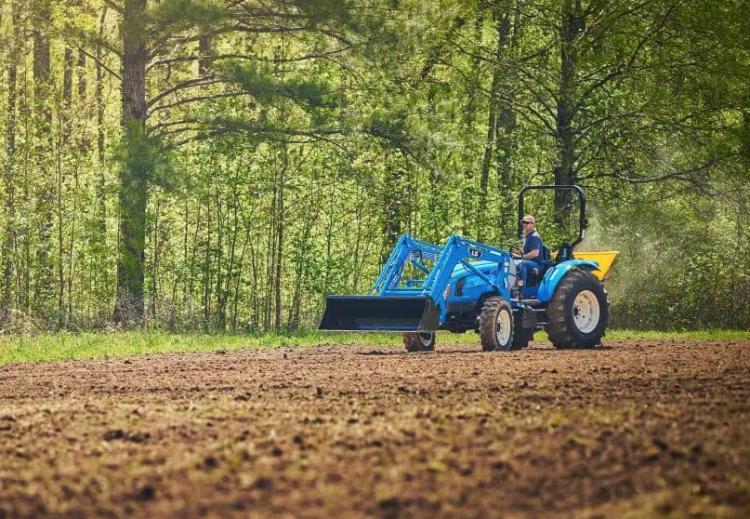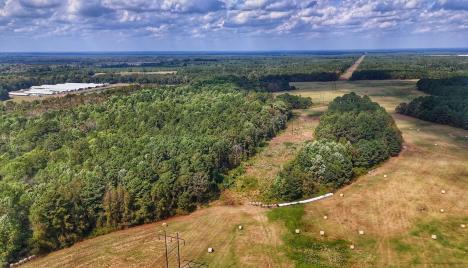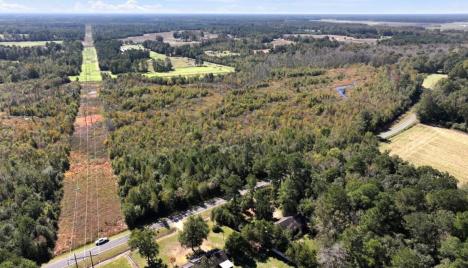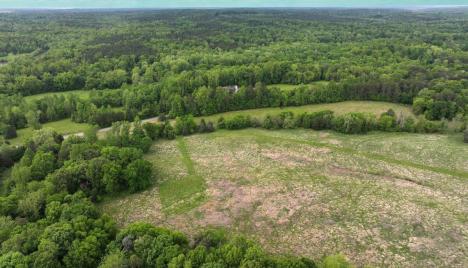There seems to be an endless amount of online information on what are the best things to plant for whitetails, but a gamekeeper may still wonder, “What is the best summer food plots for deer on their specific property.” To put it simply, whitetails need a consistent high protein, nutrient-rich food source to be at their peak health and to express their genetic potential in terms of body size, antler growth, and optimum fawn rearing.
The Benefits of Planting Legumes
Legumes are by far my favorite plantings for whitetail nutrition during the spring and summer. Clover, beans, peas, alfalfa, and lablab are a few examples of legumes that are incredible for your deer. Legumes are very versatile and you can find a type and variety that will work for most soils in every part of the country. While there are some big differences in how these various types of legumes grow, they all share the characteristic of being highly palatable to deer and offer a wealth of protein and digestible nutrients.
Nitrogen Fixing Capability
The nitrogen fixing capability of legumes is another great benefit not to overlook. Regions that have soils with poor overall fertility can see gains by using warm season legumes followed by cool season cereal grain blends. Monocots, or plants in the grass family, are major users of nitrogen left behind by successful warm season legumes. Other popular late summer/fall plantings for deer like radishes, rape, turnips, etc. also do better with readily available nitrogen. Soils that are low in organic matter and tilth can be greatly improved by a steady rotation of warm season legumes and cool season grain blends.
One of my favorite “soil rehab” plantings is to use iron clay peas and mung beans for the spring and summer. These are amazing companion crops and deer absolutely love them. Once the fall planting season arrives, I terminate this crop with a bush hog in strips, and then no-till plant a cereal grain and radish combo. Biologic’s Protein Peas and Deer Plot blends are perfect for this as well as being extremely attractive to your deer herd.
Control Weeds with Selective Herbicides
Another great benefit of legume crops is the ability to use selective herbicides over them for weed control. This is especially helpful for areas that have major invasive grass problems like Johnson grass, foxtail, and shattercane, to name a few. These selective herbicides can be the difference in having a successful plot or one that is overtaken with competition.
Clethodim is my go-to herbicide for grass control. I have used it over all the legume crops mentioned earlier with great results. A great way to “weed & feed” a legume crop is adding a fertilizer to your tank mix with the herbicide. Anytime I spray a clover plot I use a tank mix of clethodim, AMS (ammonium sulfate), surfactant and MEEN Green water-soluble fertilizer. The AMS, and nitrogen content of the MEEN Green increases and speeds up the activity of the herbicide on the targeted grasses while the other nutrients feed the clover or other legumes you may be trying to grow and protect.
Planting Soybeans for Deer
Soybeans can’t go without being mentioned for incredible “whitetail groceries.” The ability they possess to grow very attractive and nutritious forage during the warm months and produce a bean that is so relished during the winter is almost unmatched. Similar to peas and lablab, soybeans grow well in a wide variety of soil types and can thrive most places deer live. The plant also works extremely well at extracting needed minerals from the soil that are used by the herd.
Very high in protein, the leafy parts of the soybean plant are relished by deer. During the summer, deer will only eat the leaves. However, if you have a high number of deer in your area the plants may be totally consumed before summer even rolls around. So keep a watchful eye because soybean plants are vulnerable to over-browsing right after germination. If a deer bites off the plant during the two-leaf stage, it will unfortunately not grow back. This is the downside to planting soybeans even in areas with moderate deer densities. Small plots of soybeans (less than an acre) can easily be over-browsed, particularly in areas where there are no other attractive crops growing to take away some browse pressure.
Once reaching around 30-45 days of good growth, the soybean plants are resilient and can deal with feeding pressure. Newer forage varieties like Game Changer soybeans are even better with dealing with high browse pressure and are the perfect balance between forage and bean production. The ability to use the non-selective herbicide glyphosate over Game Changer soybeans adds even more value so the land manager gets the most out of his planting investment.
Planting Grain Sorghum for Wildlife
Another summer crop that should be considered for your property is grain sorghum. Very simple to grow, sorghum is a solid choice where high whitetail densities will prevent other grain crops from living through the summer. Sorghum is inexpensive to plant and competes extremely well with weeds that are desperately trying to invade. Grain sorghum is not only loved by whitetails, but most all birds, including turkeys, will readily use the seed once it matures.
Some managers find combination plots of grain sorghum and a legume like lablab or peas do really well together as the stalk of the sorghum gives the vining legumes an extra place to vine up and create more forage. The only downside to this tactic is not being able to use a selective herbicide, like clethodim, post-emergence since the sorghum is in the grass family. In this case, in areas where weeds are expected to be a problem, a pre-emergent herbicide like metolachlor (Dual Magnum) could be utilized just before planting. I have seen grain sorghum heavily utilized by deer during the late winter when other food sources become scarce. The seed heads provide great energy and fat for deer during rough weather.
Planting Clover for Deer
Possibly the most versatile of the legume crops is clover. Depending on where you live, it needs to be planted at key times of the year. Being a perennial and one that also thrives during cooler temperatures, perennial white clovers need a solid 60 days of growth before it experiences a frost or extreme heat (conditions that cause the plants to go into dormancy). For the south, this means either using a frost seeding method in late winter or planting in the early fall when moisture is available. Late spring and summer plantings in the south can often end in failure, as there is not enough root development to survive the heat and extended droughts it can encounter.
For the Midwest and North, clover is often frost seeded or planted in the spring and on into the summer when soil temperatures rise and good moisture is present. Improved varieties of white ladino clover, like Non-Typical, have great characteristics for food plots. The nutrition is generally in the mid 20% protein range and at times in the low 30% range; this is perfect food for whitetails.
The ability to maintain and manage a clover field for several years with just one planting is an attractive plan to land owners and property managers, but a really successful clover field needs to looked after and managed well for it to last it’s maximum amount of time. The ability of a good perennial clover to be grazed to the dirt and continue to put out new growth for the majority of the year makes it a great choice to be part of your food plot program. We see so many successful early and mid-season hunts in our clover food plots and it really proves how valuable and attractive it is to whitetails.
Planting Sunflowers for Wildlife
Sunflowers are also a great crop to provide diversity and food value during the summer, especially when it comes to helping the wild turkey population. This warm-season plant produces small black seeds, high in oil content, and thrives in most all locations. The Peredovik sunflower can be grown monoculture in strips, or planted with millet, sorghum, and other annual grains. Taking around 100 days to mature, the sunflower provides the seeds for turkeys, quail, doves and pheasants. One thing to remember, however, is that if the deer density is high in your location and you haven’t provided them with a variety of other food plots, they will eat the sunflower plants when they’re young – effectively killing the plant.
These are just a few choices on what you can use to help create better food value and diversity on your property during the summer months. There are many variables from one property to another and different climates and conditions to consider. Remember not to be too hung-up on looking for a “magic bean” (as we like to call it) that checks every box on what you need. Ideal habitat and diet for whitetails and other wildlife is about diversity and offering several types of cover, browse, and food plot crops so regardless of size or location, you can make your place the best it can be.
- AUSTIN DELANO





